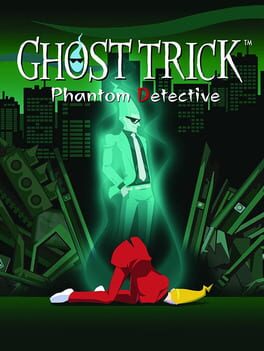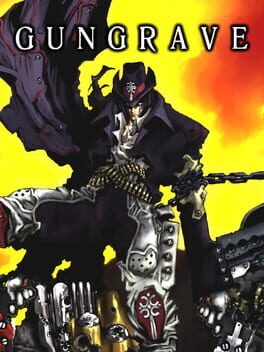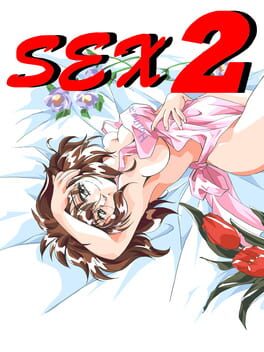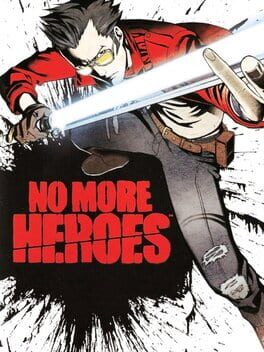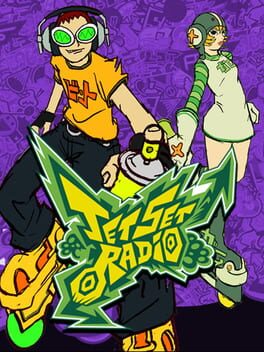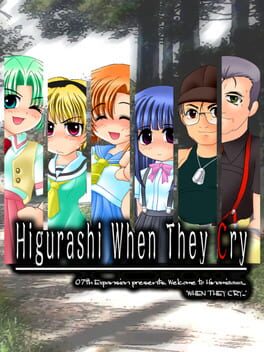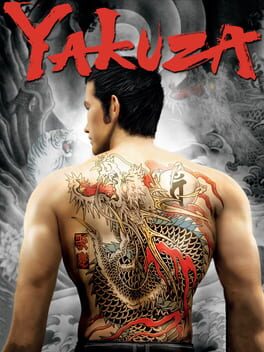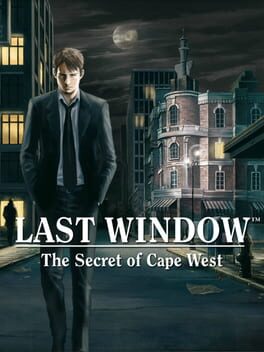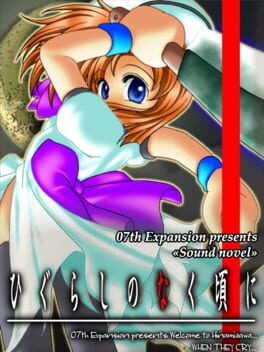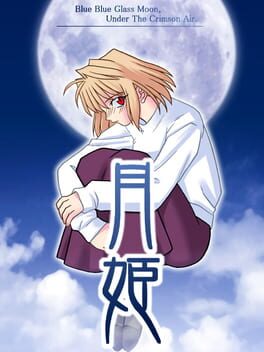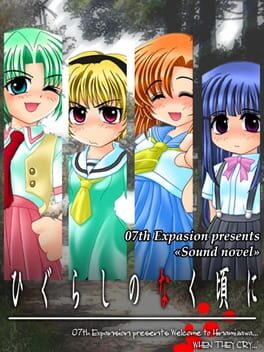PKD2
2002
1996
1998
This is the only racing game I know of that has incorporated a theme, in this case the idea of a “turning point” and implementing it into all these different aspects to create a unified and beautifully made game. The gameplay is centered around drifting around corners and turns; the managers you meet are in what can be called turning points in their lives and as the Prix progresses move on from the past and towards the future; the final race of the Grand Prix takes place on the last day of 1999, the literal turning point between two millenniums; and of course this being the last Ridge Racer on the PS1, serving as a turning point for the series. The fact that this game released with a 60 FPS version of Ridge Racer 1 to show how far the series has come on the same platform really ties everything together as well. Overall a phenomenal title and my favorite racer. also has good music.
2007
Smells like Suda spirit.
This game is loud, crude, in your face, and maybe even a little obnoxious at times but I love it. It almost constantly maintains this super goofy over the top tone, and it never takes itself too seriously, opting to go all in on it’s satire of what I believe to be the entire video game medium.
The gameplay is an often disliked part of this game, but I feel it works incredibly well. In that classic Suda fashion, it chooses to purposefully stray away from something “fun” in favor of using the gameplay thematically. The game follows this super tedious, super linear format of grinding money, paying the United Assassins Association all your hard earned cash in order to set up the next rank fight, play a level to get to the boss, kill the boss, wash rinse and repeat. It isn’t very fun, especially the money gathering.
It seems pretty amateurish to have such a system, but under the lense that the game is a satire, it becomes a bit more meaningful. Think of a solid 80% or more of the games you’ve played and think about their gameplay loops. How much you do this gameplay loop under the runtime of the game. I don’t know about you, but for me I quickly realized that for a lot of these games I’m basically doing the same thing over and over. I just never notice it since these games strive to be fun and that masks the monotony.
By removing the “fun”, No More Heroes gameplay highlights how extremely repetitive so many games are. It laughs and makes fun of them.
Even the combat is like this; both the bosses and you only have a handful of moves and the bosses have A LOT of HP (especially the final boss) so you’re going to be going in cycles of dodging attacks, blocking attacks, counterattacking, and so forth over and over until eventually you or the boss dies. When I fought the final boss for the first time, my hands actually started hurting from how long I had to fight them.
And of course, it’s really impossible to talk about this game without talking about it’s protagonist Travis Touchdown, who is honestly one of my favorite video game protagonists ever. If I met him in real life I’d probably hate the guy, but as a character I love him. Travis perfectly encapsulates both the satiricalness of No More Heroes as well as it’s commentary beautifully.
If the gameplay and its format is satire of video games, then Travis, the one who’s actually rising up the ranks and doing the fighting, would be a satire of us, the players.
When we first see Travis just outside of the intro, he’s easily decapitating some guys and doing cool poses and the like. He seems like the most badass guy ever. Then we see his daily life and find out he lives alone in a motel, has no stable employment, has shelves of anime girl figurines, and his walls are plastered with Mexican wrestling masks (classic Suda).
Frankly, he lives a pretty pathetic life. He’s a very not subtle satiricalization of many video game players and anime fans, some guy who surrounds himself with fiction rather than attempting to improve his life. So when he’s a super cool badass it’s really an illusion masking this patheticness, and it’s really an illusion we would all want to be in reality. We would all want to be the cool guy destroying enemies and saving the princess and all that, and so in order to live out this fantasy we play video games and surround ourselves with fiction, just like Travis.
The game indulges in our fantasy with the rank matches, but after the level is done and the boss is slayed, we are forced to return back to the motel and our real lives. From there the only thing we can do is work and then blow off all our money towards more fantastical fiction…it’s kind of a depressing loop, and one I could easily imagine many people becoming entangled in. Hell, I could end up in that situation to be honest.
But despite some of its more saddening comments on modern consumerism, it still maintains a silly tone throughout. Messing around with Jeane the kitten in the motel, hearing about the ridiculous DVDs Travis rents, driving around town in an uber custom motorbike, it’s such a goofy and lovable title. In order to save the game you have to take a dump in a toilet for Christ's sake.
I haven’t played any other No More Heroes game just yet, but in the near future I’d love to play No More Heroes 2. From what I’ve read online it’s a somewhat less fondly loved game, but if it maintains at least some of the spirit this game has I know I’ll enjoy it, to some extent anyways.
This game is loud, crude, in your face, and maybe even a little obnoxious at times but I love it. It almost constantly maintains this super goofy over the top tone, and it never takes itself too seriously, opting to go all in on it’s satire of what I believe to be the entire video game medium.
The gameplay is an often disliked part of this game, but I feel it works incredibly well. In that classic Suda fashion, it chooses to purposefully stray away from something “fun” in favor of using the gameplay thematically. The game follows this super tedious, super linear format of grinding money, paying the United Assassins Association all your hard earned cash in order to set up the next rank fight, play a level to get to the boss, kill the boss, wash rinse and repeat. It isn’t very fun, especially the money gathering.
It seems pretty amateurish to have such a system, but under the lense that the game is a satire, it becomes a bit more meaningful. Think of a solid 80% or more of the games you’ve played and think about their gameplay loops. How much you do this gameplay loop under the runtime of the game. I don’t know about you, but for me I quickly realized that for a lot of these games I’m basically doing the same thing over and over. I just never notice it since these games strive to be fun and that masks the monotony.
By removing the “fun”, No More Heroes gameplay highlights how extremely repetitive so many games are. It laughs and makes fun of them.
Even the combat is like this; both the bosses and you only have a handful of moves and the bosses have A LOT of HP (especially the final boss) so you’re going to be going in cycles of dodging attacks, blocking attacks, counterattacking, and so forth over and over until eventually you or the boss dies. When I fought the final boss for the first time, my hands actually started hurting from how long I had to fight them.
And of course, it’s really impossible to talk about this game without talking about it’s protagonist Travis Touchdown, who is honestly one of my favorite video game protagonists ever. If I met him in real life I’d probably hate the guy, but as a character I love him. Travis perfectly encapsulates both the satiricalness of No More Heroes as well as it’s commentary beautifully.
If the gameplay and its format is satire of video games, then Travis, the one who’s actually rising up the ranks and doing the fighting, would be a satire of us, the players.
When we first see Travis just outside of the intro, he’s easily decapitating some guys and doing cool poses and the like. He seems like the most badass guy ever. Then we see his daily life and find out he lives alone in a motel, has no stable employment, has shelves of anime girl figurines, and his walls are plastered with Mexican wrestling masks (classic Suda).
Frankly, he lives a pretty pathetic life. He’s a very not subtle satiricalization of many video game players and anime fans, some guy who surrounds himself with fiction rather than attempting to improve his life. So when he’s a super cool badass it’s really an illusion masking this patheticness, and it’s really an illusion we would all want to be in reality. We would all want to be the cool guy destroying enemies and saving the princess and all that, and so in order to live out this fantasy we play video games and surround ourselves with fiction, just like Travis.
The game indulges in our fantasy with the rank matches, but after the level is done and the boss is slayed, we are forced to return back to the motel and our real lives. From there the only thing we can do is work and then blow off all our money towards more fantastical fiction…it’s kind of a depressing loop, and one I could easily imagine many people becoming entangled in. Hell, I could end up in that situation to be honest.
But despite some of its more saddening comments on modern consumerism, it still maintains a silly tone throughout. Messing around with Jeane the kitten in the motel, hearing about the ridiculous DVDs Travis rents, driving around town in an uber custom motorbike, it’s such a goofy and lovable title. In order to save the game you have to take a dump in a toilet for Christ's sake.
I haven’t played any other No More Heroes game just yet, but in the near future I’d love to play No More Heroes 2. From what I’ve read online it’s a somewhat less fondly loved game, but if it maintains at least some of the spirit this game has I know I’ll enjoy it, to some extent anyways.
2012
Pretty well put together mystery. Each chapter gives slight clues to work with on slowly figuring out some parts of the mystery, but nothing is ever so huge or obvious you can make any deduction with absolutely certainty, and I think that’s the goal mysteries should strive for.
Additionally some of the narratives for the individual chapters are quite middling, with slow pacing particularly in the early to middle portions, but each Question Arc chapter is less about attempting to be their own complete narrative and rather fulfill a specific purpose in the mystery and the overarching narrative of all the chapters.
Also Hello! from the original soundtrack fucks so hard idk why they’d replace it in the steam release…
Additionally some of the narratives for the individual chapters are quite middling, with slow pacing particularly in the early to middle portions, but each Question Arc chapter is less about attempting to be their own complete narrative and rather fulfill a specific purpose in the mystery and the overarching narrative of all the chapters.
Also Hello! from the original soundtrack fucks so hard idk why they’d replace it in the steam release…
2005
Devil May Cry 2: Grasshopper Manufacture edition.
Though I do not particularly enjoy doing this, for this review I will primarily be comparing this game to other titles. I believe this game doesn’t really form its own distinct identity outside of “The Sequel of No Mo Heroes” and as a result it’s really difficult to talk about it as though it were an independent work that stands on its own.
No More Heroes, like many SUDA51 games, is an incredibly multi-faceted work with brilliant commentary on a wide range of topics relating to video games and human life, but No More Heroes 2 lacks any of this clever writing and game design that has made Grasshopper Manufacture such an endearing company up until this time. It makes sense since SUDA51 did not serve as director and his role of writer is somewhat ambiguous as well for this game, and it shows.
In my review of No More Heroes, I specifically focused on the game’s commentary on the repetitive nature of video games and how it uses an intentionally poorly structured game loop to highlight this repetitiveness among other things. This structure is completely changed in this game. Now, you are able to directly go into the rank battles one after another without having to pay the ranking fee. The side jobs are still present in the game, but are completely optional. The annoying unfun side jobs of the original which mirror jobs in real life have been replaced by much funner 8-bit style arcade games. What these changes do is make the game much better paced and better structured from a gameplay perspective, but ruins some of the artistic goals of the original.
This wouldn’t be a problem if the game made up for it with its own ideas and themes, but it does not. This is why I say that this game has no separate identity outside of simply being the sequel of No More Heroes. Its primary theme, revenge and the cycle of violence, is something already present in the original. It is just far less subtle in this game. All the humor, the characters, and the tone of the original is preserved and dumped directly into this one as well. In fact, in some ways this game is even a flanderization of No More Heroes. The sexuality has gone waaay up and so has the general ridiculousness. This game WILL make you look at Sylvia’s breasts and even if you avoid one cutscene with a zoom up on them it will eventually catch you slacking.
Even the core narrative of this game is, frankly, a rehash of the original that lacks any of the deliberate commentary of the original. No More Heroes 2 copies No More Heroes whenever it can and makes reckless changes without really thinking very hard for why the original is designed the way it is. This is why at the top of this critique, I compared this game to Devil May Cry 2. They are actually decently similar games in many ways. Both lack the director of the original game they’re a sequel to, both are far more ridiculous than the original in their events (DMC2 has demon tanks and helicopters and this game has mech battles and weird giant batman parody babies), both are pretty pointless sequels, and both completely misunderstand what made the original good in the first place.
Now of course, DMC2 and this game is not a 1 to 1 comparison. No More Heroes 2 is far better than DMC2 and succeeds in many of the aspects the latter fails, and I honestly might be stretching a lot with this comparison, however I feel like they fall into similar pitfalls.
Despite all of this, I still reasonably enjoyed my time with this game. Even if it does not quite have the wit of the original, it most certainly has its charm, and that may be enough for me. The gameplay is still extremely button mashy but so much fun, Travis is still a loveable jackass, and you’re still able to play with Jeane the cat though she’s gained a bit of weight. Most of the things I enjoyed about this game were already in the original, however. Still, 3 whole extra stars to this game for making playing with Jeane more interactive. Very excited to see what SUDA51 does with her in NMH3!
Though I do not particularly enjoy doing this, for this review I will primarily be comparing this game to other titles. I believe this game doesn’t really form its own distinct identity outside of “The Sequel of No Mo Heroes” and as a result it’s really difficult to talk about it as though it were an independent work that stands on its own.
No More Heroes, like many SUDA51 games, is an incredibly multi-faceted work with brilliant commentary on a wide range of topics relating to video games and human life, but No More Heroes 2 lacks any of this clever writing and game design that has made Grasshopper Manufacture such an endearing company up until this time. It makes sense since SUDA51 did not serve as director and his role of writer is somewhat ambiguous as well for this game, and it shows.
In my review of No More Heroes, I specifically focused on the game’s commentary on the repetitive nature of video games and how it uses an intentionally poorly structured game loop to highlight this repetitiveness among other things. This structure is completely changed in this game. Now, you are able to directly go into the rank battles one after another without having to pay the ranking fee. The side jobs are still present in the game, but are completely optional. The annoying unfun side jobs of the original which mirror jobs in real life have been replaced by much funner 8-bit style arcade games. What these changes do is make the game much better paced and better structured from a gameplay perspective, but ruins some of the artistic goals of the original.
This wouldn’t be a problem if the game made up for it with its own ideas and themes, but it does not. This is why I say that this game has no separate identity outside of simply being the sequel of No More Heroes. Its primary theme, revenge and the cycle of violence, is something already present in the original. It is just far less subtle in this game. All the humor, the characters, and the tone of the original is preserved and dumped directly into this one as well. In fact, in some ways this game is even a flanderization of No More Heroes. The sexuality has gone waaay up and so has the general ridiculousness. This game WILL make you look at Sylvia’s breasts and even if you avoid one cutscene with a zoom up on them it will eventually catch you slacking.
Even the core narrative of this game is, frankly, a rehash of the original that lacks any of the deliberate commentary of the original. No More Heroes 2 copies No More Heroes whenever it can and makes reckless changes without really thinking very hard for why the original is designed the way it is. This is why at the top of this critique, I compared this game to Devil May Cry 2. They are actually decently similar games in many ways. Both lack the director of the original game they’re a sequel to, both are far more ridiculous than the original in their events (DMC2 has demon tanks and helicopters and this game has mech battles and weird giant batman parody babies), both are pretty pointless sequels, and both completely misunderstand what made the original good in the first place.
Now of course, DMC2 and this game is not a 1 to 1 comparison. No More Heroes 2 is far better than DMC2 and succeeds in many of the aspects the latter fails, and I honestly might be stretching a lot with this comparison, however I feel like they fall into similar pitfalls.
Despite all of this, I still reasonably enjoyed my time with this game. Even if it does not quite have the wit of the original, it most certainly has its charm, and that may be enough for me. The gameplay is still extremely button mashy but so much fun, Travis is still a loveable jackass, and you’re still able to play with Jeane the cat though she’s gained a bit of weight. Most of the things I enjoyed about this game were already in the original, however. Still, 3 whole extra stars to this game for making playing with Jeane more interactive. Very excited to see what SUDA51 does with her in NMH3!
2016
It’s really about time I threw in the towel on this game. I’ve been playing this title on and off for a little under a year now, and I’d always go long stretches of time just forgetting about this game then being reminded of it’s existence by seeing it on my “playing” tab.
The thing about this game is that it really doesn’t have anything to engage me. There are a variety of things a game can engage me through and this game really has none of them. The cast is fine, none of the characters stood out to me in any way and I really didn’t enjoy them besides a select few story interactions and those skit segments. The villains are incredibly bland and merely serve as motivations for the protagonists rather than as fleshed out individual characters. The art direction is incredibly generic, the locations and world are incredibly standard for JRPGs, the dungeon puzzles are an insult to the word puzzle, I could really go on and on and on with each and every thing in this game.
It sucks too since I know someone who really seems to enjoy this game, but I just can’t get into it in the 20 hours I’ve given it.
The thing about this game is that it really doesn’t have anything to engage me. There are a variety of things a game can engage me through and this game really has none of them. The cast is fine, none of the characters stood out to me in any way and I really didn’t enjoy them besides a select few story interactions and those skit segments. The villains are incredibly bland and merely serve as motivations for the protagonists rather than as fleshed out individual characters. The art direction is incredibly generic, the locations and world are incredibly standard for JRPGs, the dungeon puzzles are an insult to the word puzzle, I could really go on and on and on with each and every thing in this game.
It sucks too since I know someone who really seems to enjoy this game, but I just can’t get into it in the 20 hours I’ve given it.
This review will be talking about both Hotel Dusk and Last Window as what makes them such great titles are shared between both of them.
These titles are some of the most grounded and personal works I have ever had the pleasure of going through. By personal, I do not mean something that relates to me specifically, but rather that the ideas and stories of these titles are something applicable to all of our real lives.
In both games there is this mystery that has plagued Kyle Hyde for several years, or even most of his life. Hotel Dusk and Last Window take place late in December of the years 1979 and 1980, respectively and there’s this very unique sense of urgency to solve these cases before the new year begins. At the end of every year, we look back on it, at all of it’s victories and failures, then we hope for a better future, and there’s also a sense to wrap everything from the the year up. These games manifest that sense of urgency into reality. In Hotel Dusk, everyone related to the case you’re investigating is in the same area but wait just one day and at least one will certainly leave and the puzzle will be left unfinished forever. In Last Window, the location of the case you’re investigating this time is going to be demolished in just two weeks, so you must solve the mystery before then and of course before the new year begins.
This very human concept of moving on from the past and the games general realistic setting is backed up by it’s lovable cast. Most of the characters relate to these themes, having these mysteries that have plagued them with expiry dates on the solution, and as you solve the mysteries of these side characters you slowly solve bits and parts of your own. Adding to the realistic feel of the games is the dialogue and character art. The dialogue and writing flows extremely well and naturally, it really does feel like these characters are actual people and the brilliant animations and movements done through rotoscoping makes these characters feel alive all the more.
The music is another aspect adding to this with less technological instruments and rather much more tangible ones befitting of games taking place in the late 70s and early 80s such as saxophones, pianos, drums, and the like.
All in all thoroughly enjoyable titles, I probably could’ve written a better review but it’s 12:30 am, I’m tired, but I also wanted to get my love for these games out there and did not want to wait until the morning!!
obligatory RIP Cing
These titles are some of the most grounded and personal works I have ever had the pleasure of going through. By personal, I do not mean something that relates to me specifically, but rather that the ideas and stories of these titles are something applicable to all of our real lives.
In both games there is this mystery that has plagued Kyle Hyde for several years, or even most of his life. Hotel Dusk and Last Window take place late in December of the years 1979 and 1980, respectively and there’s this very unique sense of urgency to solve these cases before the new year begins. At the end of every year, we look back on it, at all of it’s victories and failures, then we hope for a better future, and there’s also a sense to wrap everything from the the year up. These games manifest that sense of urgency into reality. In Hotel Dusk, everyone related to the case you’re investigating is in the same area but wait just one day and at least one will certainly leave and the puzzle will be left unfinished forever. In Last Window, the location of the case you’re investigating this time is going to be demolished in just two weeks, so you must solve the mystery before then and of course before the new year begins.
This very human concept of moving on from the past and the games general realistic setting is backed up by it’s lovable cast. Most of the characters relate to these themes, having these mysteries that have plagued them with expiry dates on the solution, and as you solve the mysteries of these side characters you slowly solve bits and parts of your own. Adding to the realistic feel of the games is the dialogue and character art. The dialogue and writing flows extremely well and naturally, it really does feel like these characters are actual people and the brilliant animations and movements done through rotoscoping makes these characters feel alive all the more.
The music is another aspect adding to this with less technological instruments and rather much more tangible ones befitting of games taking place in the late 70s and early 80s such as saxophones, pianos, drums, and the like.
All in all thoroughly enjoyable titles, I probably could’ve written a better review but it’s 12:30 am, I’m tired, but I also wanted to get my love for these games out there and did not want to wait until the morning!!
obligatory RIP Cing
This review contains spoilers
Time for a slightly more serious review of this chapter. This is the only chapter in Higurashi thus far where I’ve felt the need to write an actual review as this one specifically feels far more “complete” to me compared to the previous two. It has its own themes and messaging, things I failed to grasp in the previous chapters.
I believe this chapter is simply about the sheer powerlessness of humans. Not just individual people but entire communities and governments are completely powerless against certain problems, and the chapter goes about painting this idea by showing various crisis’ and what characters are able to do about them.
We first see this with Satoko’s abusive uncle, which is the crux of this chapter. We know that through the characters dialogue and reasoning that there is nothing they can do to help Satoko. They don’t have the authority or power to get her away from her uncle, and nothing anyone can think to do can provide a lasting solution. Keiichi resolves himself to kill Satoko’s uncle, but that does not save her. Regardless of whether Keiichi actually killed her uncle or not, which is something the chapter leaves ambiguous, Satoko’s abuse plainly continues. Despite supposedly getting rid of what caused the problem, it still manages to inflict pain on Satoko. So to put it simply, individuals have the “will” to solve the problem, but not the power. Then what about the government and other public institutions? They should have all the power in the world to solve a case like this. The problem is public institutions and the government might have the power but they don’t have the “will” until a problem is proven to exist without a reasonable doubt. With Satoko lying to public authorities and trying to hide the evidence of abuse, it is impossible for the government to gain the “will”. So despite having the power to help, without the “will” it is worthless. They are just as powerless as the individual under these conditions and completely unreliable.
We see another, much more extreme example with Hinamizawa’s destruction. This is very similar to Satoko’s abuse in that, even though there are signs of what is happening, both individual and government are too slow to act upon given warning signs and as a result a catastrophe occurs. It is noted that government action was particularly slow with them not detecting signs of a disaster on this scale until it was far too late. Should the government have been more vigilant and quicker, they would’ve been able to save a good portion of the village, if not more. But because of their lax nature they were unable to detect the problem or gain the “will”, and thus become powerless to prevent the destruction. It should also be noted that regardless of how fast they find out about the issue, the damage will still be done. A small amount of people will likely die and Hinamizawa will become inhospitable. No matter how fast the government response is, they can’t prevent all the damage.
This is again similar to the case with Satoko. With her being missing from school for three days and Rika refusing to tell what happened to her, there are already big warning signs. However because of assumption that everything is fine they discover the abuse too late. But let’s say they do discover the abuse day one and are immediately able to find everything out. How does this change things? Not by too much. Maybe they could’ve convinced Satoko to report her uncle, but the damage would still be done.
In both this case and the volcanic gas case, the “helpers” were too slow to realize problems were occurring and even if they realized it sooner irreparable damage would still be done. They are ultimately helpless and completely powerless, just like the people they’re attempting to help.
Don’t expect another review of this length or depth for any of the other chapters in Higurashi as ironically despite this chapter being the most difficult to figure out in terms of the mystery, it has been by far the easiest to understand thematically of the three chapters I’ve played.
I believe this chapter is simply about the sheer powerlessness of humans. Not just individual people but entire communities and governments are completely powerless against certain problems, and the chapter goes about painting this idea by showing various crisis’ and what characters are able to do about them.
We first see this with Satoko’s abusive uncle, which is the crux of this chapter. We know that through the characters dialogue and reasoning that there is nothing they can do to help Satoko. They don’t have the authority or power to get her away from her uncle, and nothing anyone can think to do can provide a lasting solution. Keiichi resolves himself to kill Satoko’s uncle, but that does not save her. Regardless of whether Keiichi actually killed her uncle or not, which is something the chapter leaves ambiguous, Satoko’s abuse plainly continues. Despite supposedly getting rid of what caused the problem, it still manages to inflict pain on Satoko. So to put it simply, individuals have the “will” to solve the problem, but not the power. Then what about the government and other public institutions? They should have all the power in the world to solve a case like this. The problem is public institutions and the government might have the power but they don’t have the “will” until a problem is proven to exist without a reasonable doubt. With Satoko lying to public authorities and trying to hide the evidence of abuse, it is impossible for the government to gain the “will”. So despite having the power to help, without the “will” it is worthless. They are just as powerless as the individual under these conditions and completely unreliable.
We see another, much more extreme example with Hinamizawa’s destruction. This is very similar to Satoko’s abuse in that, even though there are signs of what is happening, both individual and government are too slow to act upon given warning signs and as a result a catastrophe occurs. It is noted that government action was particularly slow with them not detecting signs of a disaster on this scale until it was far too late. Should the government have been more vigilant and quicker, they would’ve been able to save a good portion of the village, if not more. But because of their lax nature they were unable to detect the problem or gain the “will”, and thus become powerless to prevent the destruction. It should also be noted that regardless of how fast they find out about the issue, the damage will still be done. A small amount of people will likely die and Hinamizawa will become inhospitable. No matter how fast the government response is, they can’t prevent all the damage.
This is again similar to the case with Satoko. With her being missing from school for three days and Rika refusing to tell what happened to her, there are already big warning signs. However because of assumption that everything is fine they discover the abuse too late. But let’s say they do discover the abuse day one and are immediately able to find everything out. How does this change things? Not by too much. Maybe they could’ve convinced Satoko to report her uncle, but the damage would still be done.
In both this case and the volcanic gas case, the “helpers” were too slow to realize problems were occurring and even if they realized it sooner irreparable damage would still be done. They are ultimately helpless and completely powerless, just like the people they’re attempting to help.
Don’t expect another review of this length or depth for any of the other chapters in Higurashi as ironically despite this chapter being the most difficult to figure out in terms of the mystery, it has been by far the easiest to understand thematically of the three chapters I’ve played.
2000
